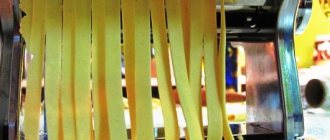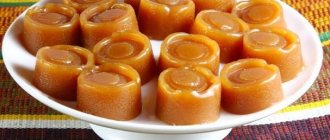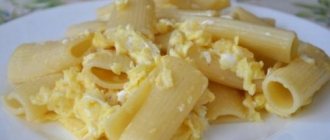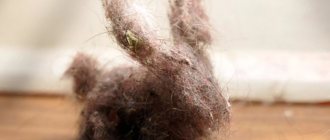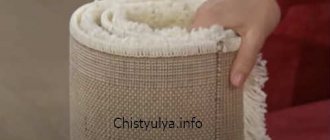How birds sleep
Birds that spend the night not in tree branches practically sleep standing up.
Why don't they fall to the ground? Birds have a long tendon, about the same length as the bird's leg, connected to a strong muscle. When the bird sits, the tendon stretches, acts on the fingers, and they compress, covering the branch. This mechanism is very reliable. It happens that dead birds are found on tree branches: they do not fall, because even after death their fingers continue to tightly grip the branch. Many birds sleep with their heads tucked under their wings and their feathers raised to protect them from the cold. Herons and storks often sleep standing on one leg. Some parrots in South America sleep in an original way. They hang upside down, clinging to a branch with one leg. Some swifts sleep in a large ball.
Bird sleep is associated with some special metabolic issues. In birds, metabolism is very intense. The normal temperature of birds is 42 C, that is, the temperature that a person experiences only with a serious illness. During sleep, chemical processes in the birds' bodies slow down, and body temperature drops to 20 C.
Many water birds sleep "float". Often ducks and swans are captured by ice: while they sleep, the water around them freezes. Seagulls also sleep on the water. They claim that they can fall asleep for a short time during flight. The ability to sleep in flight is also attributed to birds that can make long flights, such as albatrosses. This may be true, but albatrosses undoubtedly spend most of their sleep on the water. Some animals sleep underwater.
The life cycle of these insects
What do night moths eat at home?
how to grow butterflies at home? what you will need This beneficial insect has practically no enemies. Only rare birds (such as the flycatcher or nuthatch) eat them. Most mammals simply do not have time to catch the dexterous bugs, because they make 85 strokes per second.
A distinctive feature is the three-part legs. By the 5th month of their life, insects reach sexual maturity; in April they begin their active breeding season. At this moment, the ladybug needs to feed especially intensively in order to get healthy offspring.
Insect eggs are usually attached to the underside of tree leaves. One female is capable of laying 4 hundred eggs at once. The larvae feed on eggshells left after they hatch.
Of the large number of eggs laid, not all will begin to develop—some of the embryos will die in the process. The emerging larvae may also consume the remains of such unborn creatures. A full-fledged bug grows in one month.
For habitat, insects most often choose plants infected with aphids. And some species live on reeds near water bodies or in field grasses. Almost all of them lead a separate lifestyle and are independent. The only exception is the mating season.
During the spring and summer months, the ladybug eats enough food and accumulates reserves for wintering. As soon as the cold weather sets in, these beetles begin to hibernate, and in the spring a new round of life begins, and those ladybugs that were able to survive the winter begin to lay larvae, but by the time the new generation reaches full life, these individuals are already dying.
In scientific books they are called “Coccinellidae”, or “Coccinellidae”, in other countries the ladybug is called differently: “St. Virgin Mary’s beetle”, “St. Anthony’s beetle”, “Sun”. In Tajikistan they are called “Redbeard Grandfather”. This name shows how sensitive summer residents are to beneficial insects.
The ladybug has an oval-elongated body, flat below and convex above, with inconspicuous hair in some individuals. The size is approximately four to ten millimeters. The head is small with segmented antennae. The insect has six legs with which it moves quickly, and it flies thanks to its two hind wings. The front wings perform a protective function when the ladybug is on the ground.
The color of the insect can be different in configuration with each other:
- bright red;
- yellow;
- Navy blue;
- black;
- brown.
The pattern on the back indicates gender. In total there are about four thousand species of cows, the most famous:
- point-to-point;
- seven-point;
- twelve-point;
- thirteen-point;
- seventeen-point;
Ladybug can have different colors
- blue;
- pointless;
- Asian.
Sexual period occurs between the third and sixth months of life, most often in mid-spring. The partner searches for the female by the smell she gives off. Then mating occurs and she lays eggs near the food source (on the leaves of plants). One clutch can contain up to 400 eggs. After mating games, most females die.
The larvae appear after a week or two; at first they feed on the remains of the egg, and after gaining strength they switch to a normal diet.
How to care for a ladybug
Do you love ladybugs? The cold weather has set in, and you find a ladybug that has nothing to eat or drink because all the water is frozen? Do you want to help her? You can take her as a pet! Ladybugs love aphids, which are garden pests that can be found on plant leaves.
Part 1 of 3: Ladybug Detection
Find the ladybug. Look where ladybugs usually hide: under the leaves of plants infested with aphids (inspect roses and other flowers, or flowering fruit trees). Ladybugs also like to hide in crevices that can be found on buildings, such as window frames.
- Ladybugs love aphids, it is their main source of food.
Take the ladybug.
Catch the ladybug with a net or your hands, just don't let it fly away. Cover it with your second palm, but do not crush it. Carefully place the ladybug in the jar and you can begin to take care of it.
Part 2 of 3: Arrangement of housing for the ladybug
Use a plastic container of sufficient size for the ladybug.
The size of the container should be sufficient for short flights and overnight sleeping arrangements. Add twigs, leaves and petals for variety (any leaves or flowers should be replaced daily to prevent rotting). Provide the ladybug with a place to hide, such as a hollow stick or a small toy with holes in it.
- You can also use an insectarium.
- It is not recommended to use glass jars as they overheat quickly and can burn the ladybug, especially if placed in direct sun.
If keeping the ladybug for more than 24 hours, use a hermit crab container.
They will not be able to get out of it, but at the same time they will be comfortable. Place fresh herbs inside daily. You will also need to feed the insect daily.
What do ladybugs eat?
Small breeds of monkeys for home. pet monkeys: varieties, care at home. caring for an exotic pet at home
Different types of ladybugs have different eating preferences. Among these insects there are both carnivorous and vegetarian varieties. Herbivorous beetles will not refuse to feast on plant food: mushrooms and leaves. But meat eaters hunt various garden pests that feed on various plants.
In the natural environment, the basis of the diet of almost all varieties of ladybugs is garden aphids. Since aphids are capable of destroying almost all plantings by eating such a pest, coccinellids save farmers and summer residents from loss of crops.
In addition to aphids, these red bugs eat various insects that do not have hard skin or shells.
- Shield.
- Psyllids.
- Spider mites.
- Scaleworms.
In some regions where ladybugs have disappeared for unknown reasons, pests have the ability to destroy almost the entire harvest of certain crops. This, for example, happened in countries where the Australian pest, the scale insect, was accidentally introduced.
Today, it is a fairly common myth that ladybird larvae eat crops such as beans, peas and other legumes. But in fact, most species of coccinellids are predators, so they prefer live food, and leaves are of no interest to them.
Most gardeners wonder what ladybugs eat, besides insects.
Almost all varieties of ladybugs that prefer plant foods live in Latin America and the south of East Asia. In Russia there are only three varieties of these bugs that can be considered garden pests:
- The pointless coccinellid is widespread in the central part of Russia. In addition to aphids, the diet of this species includes alfalfa, clover, sweet clover and similar plants.
- Alfalfa beetles eat sugar beet and alfalfa plantings in the southern part of Russia.
- Twenty-eight-spotted ladybugs live in the Far East and feed on the leaves of potatoes, cucumbers, tomatoes and other vegetables.
The diet of an adult is no different from the diet of insect larvae. The only thing that can be noted is that they require different amounts of food. In three weeks, one larva can eat from seven to ten thousand aphids and other small insects. Phytophagous (vegetarian) species at this stage of life also absorb several times more plant food than adult ladybirds.
What to feed ladybugs at home
Ladybugs are often found on plants that aphids like to eat. These can be coriander, mustard, buckwheat, clover and dandelions. To wait out the winter, bugs look for secluded and warm places. Cracks in the bark of trees and in the walls of houses, fallen leaves, stones, and so on are excellent for these purposes. The main thing for ladybugs is to find a shelter where the cold wind will not penetrate. Some species are highly frost-resistant and can survive even at temperatures twenty degrees below zero.
When the bugs find a suitable place to wait out the winter, they begin to secrete special substances - pheromones. These so-called “spirits” have a very pungent and strong odor, which other individuals can smell at a distance of up to five hundred meters. In this way, ladybugs communicate with each other, calling on their relatives to share a good house for wintering. Before hibernating, these insects gather in large groups.
Sometimes cold weather comes unexpectedly and the “garden helpers” simply do not have time to prepare for the winter and find shelter for themselves. In such cases, they lose the opportunity to survive until spring and die due to frost and low temperatures. The only one who can help ladybugs survive in such a situation is man. They are quite capable of surviving the winter at home, and you will hardly have to look after them.
The list of products that you can feed ladybugs at home is negligible. Agree, it is not possible to find spider mites or aphids in winter. Therefore, the choice of food for red bugs is quite small:
- Honey diluted with water.
- Sugar-sweetened water.
- Coccinellid - a vegetarian will not refuse raisins, cucumber leaves, tomatoes, legumes and other vegetables.
Ladybugs will only need feeding for a few days. Ideally, you should feed the bugs and place them in a cool place, such as on a windowsill or between window frames. There they will quickly hibernate and live quietly until warmer weather arrives.
Nutrition and maintenance
In order to feed a ladybug, you need to know what it eats. Young individuals are very voracious. Ladybugs eat:
- aphids are the main source of food;
- psyllids;
- scale insects;
- scale insects;
- ticks.
Therefore, they can most often be found under the leaves of trees and plants, as well as in crevices of buildings and wooden window blocks.
Transparent glass or plastic containers with a closed top are ideal for home improvement. The best option would be a bottle or food box with a lid. But we should not forget that every living organism requires oxygen for life and development, so small holes must be made in the lid to allow air to enter the container.
The cow's home should be of such a size that it can fly short distances. A twig or any object with an internal hole is perfect as a sleeping place so that the animal can hide there. For variety and beauty, you can add flower petals or grass to the “interior”. It is important to prevent the leaves from rotting and drying in the container , changing them every two days.
READ ALSO: At what temperature does milk boil?
It is not recommended to store the glass “house” in places with direct exposure to sunlight, since strong heating of the vessel can lead to detrimental consequences for the insect.
Food for keeping ladybugs at home can be:
- honey;
- sugar;
- lettuce;
- raisin;
- apples.
Water plays a special role in the nutritional diet of any organism. For convenience, you can place a metal bottle cap in your home and fill it with water. The water level in the drinking bowl should not exceed the height of the beetle's body so that it does not drown. It is enough to feed and water the insect 2-3 times a day, but it is important not to overfeed it. Meals should be taken in small portions.
Appearance and features
Praying mantises at home: maintenance features
Photo: Ladybug in nature
The size of the ladybird ranges from 3.5 to 10 mm. The bug's head is small and motionless. The eyes are relatively large, the antennae of 8-11 segments are very mobile and flexible. The body of a ladybug consists of a pronotum, a thorax, three pairs of tenacious legs, an abdomen, and wings with elytra. The insect's pronotum is convex, often with spots of various colors and shapes. Bugs fly using the back pair of wings, while the front ones, in the process of evolution, were formed into strong elytra, which now serve as protection for the main pair of soft wings. Not all ladybugs have the usual scarlet color and black dots on their backs.
From all their diversity, the following varieties can be distinguished:
- two-spot - a bug with a body size of up to 5 mm. It has a black pronotum, and the bright red elytra are decorated with two large black spots;
- seven-spot - has a size of 7-8 mm, widespread throughout Europe. On its red back there are two white spots and 7 black ones;
- twelve-spotted - a red or pink bug with an elongated body shape and 12 black spots;
- with thirteen spots - distinguished by an elongated body and a dark brown or red-brown back, the spots can merge with each other;
- fourteen-pointed - a characteristic feature of the elytra is yellow or black;
- seventeen-spotted - the size of the insect is no more than 3.5 mm, it has a bright yellow back with black dots;
- blue - found only in Australia;
- ocellated - characterized by a large body size up to 10 mm. All black dots on the red or yellow back of the insect are framed by light rims;
- pointless - their size does not exceed 4.5 mm, they have a dark brown back color, their body is covered with fine hairs. They are extremely rare in nature.
Not all varieties of ladybug benefit people. The alfalfa beetle is a pest for many agricultural species. crops, it actively eats young shoots, destroys the harvest of beets, cucumbers, and so on. The bug is distinguished by its small size, up to 4 mm, it has a red back strewn with 24 dots.
Ladybug landed on a person
If this bug has landed on you or someone close to you, then this is a good omen
But it is important which part of the body he chose:
- face, hair: awards and honor, success in career, in educational institution. If it gets tangled in the hair, it promises a gift or financial gain;
- shoulder or neck: a quick meeting with a loved one, if one has not yet been found in life, and if there is already a relationship, then an end to discord, sometimes this is the support of loved ones;
- leg: some obstacles that will actually test you, but not an insurmountable obstacle to what you want. Show persistence and your plans will work out;
- belly: good news, pleasant time with friends;
- sits on clothes: surprises and pleasant gifts from fate, especially good when there are seven dots on the shell;
- right hand: the sign promises the fulfillment of a dream, which you can have time to tell the ladybug herself about to be sure;
- left hand: improved health, well-being, physical fitness.
Interesting facts about ladybugs
- In ancient times, these insects were used to predict the weather. If the bug flew away from the palm, then the day would be sunny, and when it remained on it for a long time, it promised bad weather.
- In some religions, they are prohibited from harming or killing ladybugs. Anyone who did this would be in big trouble.
- From time immemorial, the West has believed that the symbol of this insect brings good luck. Bugs were depicted on various items of clothing and accessories, and then worn as amulets.
- When these creatures are very hungry, they can cover a distance of up to 12 meters in search of food.
- An amazing feature of ladybugs is that they always return after wintering to their former habitat. To be more precise, their younger generation arrives, because their life span is short, only a year. Scientists have not yet found an explanation for this fact.
Do they feed in their natural environment in winter?
The ladybug can be found anywhere in the world except Antarctica and permafrost zones. This insect prefers to settle on trees, meadow grass or on plants growing near water bodies.
Like migratory birds, ladybugs gather in flocks in spring and autumn and fly long distances. This happens for the purpose of searching for food. When flying, the bugs fly quite high. They cannot be seen with the naked eye. Strong winds can prevent them from doing this. Because of its gusts, insects are forced to interrupt their flight, and if they are above the sea, this often leads to their death.
they are either asleep or in a state of suspended animation. Over the summer, sugar and glycerin manage to accumulate in their tissues. In order not to burst from the temperature drop when cold weather sets in, they have to remove a large amount of fluid from the body.
The main task of ladybugs at the moment is to find warm places for wintering. A large number of insects can group together for these purposes in one place. Ladybugs usually prefer dry leaves, bark or window cracks as shelters.
But you should always remember: for such a small predator, a huge human hand poses a serious danger. Do not rush to completely plow the area, or spray the garden with poisons - you will lose your tiny helpers forever.
We invite you to familiarize yourself with the Bird Stork photo and description
Among the variety of species of ladybirds, almost all are predators and eat aphids and mites in large quantities. With “pleasure” they feed on small caterpillars, butterfly eggs and pupae of other insects. During times of famine, they do not even disdain the eggs of the Colorado potato beetle.
However, some ladybugs only eat plant foods. Their diet includes mushroom mycelium, plant pollen, their leaves, flowers and even fruits.
The ladybug lives in all climatic zones and on every continent except Antarctica. The beetle cannot survive only in places where the temperature remains below freezing all year round. For example, it is not high in the mountains, where there is snow all the time. Countries with the most species: Norway, Iceland, Sweden, Denmark, France, Poland, the Netherlands, Italy, Germany, Japan, Pakistan, Mongolia, India, Korea, China.
There are sedentary insects that gather in colonies of up to 40 million for the winter. One such community can weigh 2-3 tons. Having taken refuge from the cold and huddled together, insects survive severe frosts. During the winter, many die, but the main part of the colony emerges from hibernation in the spring. It is not difficult to find where ladybugs hibernate in the garden: they usually choose places between stones, plant debris, and foliage.
Ladybug habitat
Ladybugs are distributed almost throughout the planet, with the exception of the permafrost zone and Antarctica. According to different biological classifications, researchers identify from 6 to 8 thousand species of ladybugs. They are not only red with black dots, but also vice versa. There are yellow, white, blue and even black beetles. There may be 2 points, several or none at all.
They live on trees and bushes, in the grass. They are active in the cool morning or evening hours.
In nature
In temperate latitudes, ladybugs overwinter:
- in the roots of trees;
- in piles of fallen leaves;
- in cracks under the bark of trees;
- in holes under stones;
- under the top layer of soil.
At the same time, the insects cluster together. The accumulation of identical individuals allows each to maintain a body temperature higher than in the environment.
On a note! The orange trail that a disturbed ladybug leaves behind is hemolymph, which replaces blood for insects. It is distinguished by bugs from the knee joints. The liquid has a very caustic composition, which makes ladybugs inedible for most insectivorous vertebrate creatures.
Brief information about the insect family
This insect is small in size, ranging from four to ten millimeters. Their body shape resembles a circle or oval. The insects are flat below and convex above. The ladybug is covered on top with small, thin hairs.
The structure of the insect consists of the following segments:
- head;
- six legs;
- wings,
- protective fender covers;
- chest of three sections;
- abdomen;
- pronotum.
Compared to the body, the insect has a tiny head, which is connected to the prothorax. Also on the head are relatively large eyes and antennae.
The pronotum of a ladybug has a convex shape and a transverse structure. Most insects of this species have distinct dots of various shapes, colors and sizes in their colors.
In nature, there are both red and yellow, orange and other color options. The photographs of ladybugs clearly demonstrate the different colors of insects.
Like many insects, the ladybug has six legs. With their help, the bug can quickly move along the ground, plants, stems, branches and bark of trees. The insect's abdomen consists of several segments (about 5-6). For protection, it is covered with segmental half rings.
Ladybugs fly without problems and can travel long distances compared to their size. Scientists say that over many years of evolution, their wings have become more resilient.
The front pair of wings eventually developed into hard, protective elytra. They fit tightly to the insect’s body, protecting the bug from various damage when the ladybug moves along the ground.
Folk wisdom
People have long noticed that the behavior of a ladybug predicts certain events. If you watch her carefully, you can find out:
If you watch her carefully, you can learn a lot
- If a messenger lands on clothes and immediately flies away, it means heat; if she lingers, it means rain and heavy downpour.
- Not one, but many ladybugs appeared in the house - to the guests.
- It flies into the house and sits on the threshold - for a long trip.
- Appeared in the house early in the morning - the day will be good, there will be a loss, in the evening - the next day promises to be fruitful.
- Several insects arrive during the day; there will be guests in the evening.
- God's messenger sat on her hand - great luck. If it doesn’t fly away, there’s an important task ahead.
- Bitten by a ladybug is a sign warning of an enemy; you need to take a closer look at your surroundings. A sign that you can make a wish by whispering it to the messenger.
- A messenger who is yellow and not with red wings means success in business and great news. For those who are at a crossroads, this is a special sign that forces you to think carefully before making a choice.
- A ladybug sitting on your head or hat means love adventures, an unexpected surprise or a declaration of love.
- If she fell on her head and got tangled in her hair, honor and glory awaited her.
Superstitions associated with ladybug are a little funny and naive, but you always want to believe in good things. And to be sure, you can simply watch this bright and useful insect.
Social structure and reproduction
Photo: Ladybugs
All ladybugs are solitary. Only during the mating season do males use a specific smell to look for a female to mate with. This usually happens in early spring and soon the female lays up to 400 eggs on the lower surface of the leaves. They are oval in shape and can be yellow or orange. The female chooses a place for laying closer to the aphid colony so that the offspring are provided with food. This is the only manifestation of caring for their offspring. Most often, she dies after this.
After a couple of weeks, the larvae appear. Their body is covered with hairs and has a variegated color; the pattern combines yellow and brown spots. In the first days, the larvae eat the remaining egg shells and unfertilized eggs, then go in search of aphids. The stage lasts from 4 to 7 weeks, after which the formation of a pupa occurs, which then attaches to the edge of the leaflet, where its further transformation occurs.
At the end of it, after 8-10 days, the skin peels off from the pupa like a stocking to the end of the abdomen. A full-fledged individual ladybug appears, which gradually acquires its usual bright color. At first, its elytra are pale in color; by this feature one can easily distinguish an adult from a young one. Young bugs are ready to reproduce at 3 months of life, some only at six months - it all depends on the quality of nutrition and environmental conditions.
Varieties, their names, descriptions and photos
Point-to-point
The body length of the two-spot ladybug reaches about 5 mm. The color is dark red with two parallel black dots on the back (hence the characteristic name). The body has an oblong-oval, moderately convex shape.
The head of light-colored individuals is black, with two large irregularly shaped spots (near the eyes). Dark bugs have a completely black head.
Seven-point
The seven-spotted ladybird is one of the most common species in Europe. The body size is about 8 mm. The color is red, and there are 3 black spots on the sides. The seventh spot is located near the head.
Thirteen-point
The thirteen-spotted ladybird has 13 spots on its surface. Color - red-brown or brick. In this case, some spots may merge with each other. The insect is common in Europe, Asia and North America.
Asian
The Asian ladybird or Harlequin reaches a length of 7 mm. It is either yellow-black or black-orange in color. The insect lives in Asia and feeds on aphids.
Ocellated
The ocellated ladybug is considered one of the largest and reaches a length of approximately 1 cm. The color is red or yellow. In this case, each of the spots is surrounded by a lighter halo. There are 20 such “eyes” on the back of the insect.
Pointless
The spotless ladybird is one of the rarest species, characterized by a complete absence of dark spots. The body of the insect is red or brown in color and covered with barely noticeable fibers. The insect reaches several millimeters in length.
The blue cow is the most unusual representative of this family. A distinctive feature of the insect is the blue color of the elytra with a characteristic metallic sheen. Dark spots on the back are absent (or simply not visible, because they merge with the dark blue color).
Initially, the ladybug has the appearance of a larva, the size of which does not exceed 1 mm. It only takes her one month to move to a new level of development.
Then it already has a size of 8 to 10 mm. The body of the larvae is usually gray in color, but the head is yellow. The spots on the sides of this insect are also of the same color. The body has segments on which black spines with hairs can be seen.
The body, wings and abdomen of an adult insect are black. The wings are mainly red or orange in color with spots characteristic of this insect (7 points). For this reason, the seven-spotted ladybug was named so. Three dots are on one red wing, and the same number on the second. But the 7th spot can be seen near the beetle’s head.
Adult ladybugs begin to appear outside in the first half of June, when it begins to warm up. In places where the heat comes faster, you can find ladybugs in May.
They eat aphids and can eat up to 60 adult pests in a day. A ladybug lives from several months to two years. The description of the larvae indicates that for growth and rapid development they eat much more aphids than adults.
Ladybugs belong to the order Coleoptera or beetles. The Latin name for insects is Coccinellidae. The number of their species is more than 4 thousand, distributed throughout the world. The body has an oval convex shape similar to half a ball. It consists of three main sections: head, chest and abdomen.
In adult individuals, the fore wings are modified into hard elytra, and the hind wings are used for flight. The insect has 3 pairs of legs consisting of four segments. One of them is small and therefore invisible. The limbs are covered with hairs. The abdomen consists of 6 segments.
The usual color of the ladybug is red with black dots. Their number depends on the type of insect; it can be from 2 to 28 spots. In Russia and Europe, the seven-spotted ladybug is the most common. The beetle has 3 spots on each elytra and one in common. Body length 7-8 mm. The bright color is a warning signal for enemies who will try to eat the insect. When attacked, it releases a caustic yellow substance. This liquid can leave a burn on the mucous membranes of a reptile or bird. The coloring of different species of insects can differ radically; there are black ladybugs with red dots.
Beetles choose their place of residence depending on the nutritional preferences of the species. Some settle in trees in light forests, others in meadow grass, and others near water bodies. They are heat-loving insects that prefer temperate latitudes.
Ladybug protection
Photo: Ladybug from the Red Book
The ladybug has long been listed in the Red Book of many countries, including Russia. Its complete disappearance threatens to disrupt the balance in nature and actively multiply pests, which will then have to be destroyed with chemicals, and this in turn will further destroy the balance - a vicious circle is obtained.
It is likely that in the near future people will completely abandon the use of chemicals and turn for help to ladybugs, which from time immemorial have lived next to people and helped them in the struggle for the harvest. It is not for nothing that since ancient times people have praised and worshiped this tiny bug.
Nowadays, the ladybug is successfully bred under artificial conditions. Then they are sent to the fields, but, according to many experts, it is enough just to create favorable conditions for these bugs and their population will recover on its own without human help and will remain at the level required by nature. It is necessary to maintain a balance, and for this, first of all, you should abandon the use of chemicals to treat crops against aphids, and also direct your efforts to reduce the overall level of environmental pollution.
Tags:
- Coleopterida
- Panarthropoda
- ladybugs
- Bilaterally symmetrical
- Ancient animals
- Coleoptera
- Animals of Asia
- Animals of the Antarctic Belt
- Animals of Germany
- Animals of Eurasia
- Animals of Europe
- Animals of the Red Book
- Animals of the Red Book of Russia
- Animals of the forest
- Animals of the forest-steppe
- Meadow animals
- Animals starting with the letter B
- Animals starting with the letter K
- Animals of the fields
- Animals of Russia
- Animals of the steppe
- Animals of the Subarctic Zone
- Animals of the Subtropical Zone of the Northern Hemisphere
- Animals of the Subtropical Zone of the Southern Hemisphere
- Animals of the Subequatorial Belt of the Northern Hemisphere
- Animals of the Subequatorial Belt of the Southern Hemisphere
- Animals of the Tropical Zone of the Northern Hemisphere
- Animals of the Tropical Zone of the Southern Hemisphere
- Animals of the Temperate Zone of the Northern Hemisphere
- Animals of the Temperate Zone of the Southern Hemisphere
- Animals of Switzerland
- Animals of the Equatorial Belt
- Animals of South America
- Winged insects
- Cucuyiformes
- Cucuyoides
- Shedding
- Insects of the Red Book
- Insects of the Red Book of Russia
- Insects with complete metamorphosis
- Unusual animals
- New-winged insects
- Protostomes
- Herbivorous beetles
- The most beautiful animals
- The smallest animals
- Tracheal breathing
- Arthropods
- Hexapods
- Eukaryotes
- Eumetazoans
Why do ladybugs crawl into apartments?
Ladybugs have an enviable appetite - each one needs fifty aphids a day. Ladybug larvae do not complain of lack of appetite either: about a thousand aphids are required for their full development. For humans, ladybugs can create significant inconvenience and irritation when they invade a home in large numbers. There are the following measures to eliminate ladybugs - these are (physical, natural insecticides, chemical insecticides, preventive).
- Spray camphor and menthol wherever ladybugs are found. Mix any of the above with a small amount of water, pour it into a spray bottle and spray the liquid wherever insects may be hiding. This spray will repel insects, but will not kill them.
- Use a soap and water trap. Ladybugs are attracted to light. If you place a clear glass bowl of soapy water near a window or lamp, it will create glare and reflections, making it attractive to ladybugs. When they try to get closer to her, they will fall into the water. To do this, just a few drops of liquid dishwashing soap will be enough. With its help, a film is formed on the surface of the water, which will not allow the insect to fly away, and it will drown.
- Boric acid (also known as borax or borax) should be applied to any areas where you think ladybugs might be crawling. For boric acid to work, insects must come into direct contact with the powder. Once the borax gets on the ladybugs, they will die from dehydration after a while.
- Preventive measures
We suggest you read How to get rid of a poltergeist
If the above methods did not help solve your problem with ladybugs, call the service of the Federal Budgetary Healthcare Institution “Center for Hygiene and Epidemiology in the Altai Republic” - they will provide you with professional assistance. A professional will carefully assess the scale of the problem and determine the most appropriate method for solving it (Altai Republic, Gorno-Altaisk, Kommunistichesky Ave., 13. Tel: 8 (388 22) 2-20-55)
